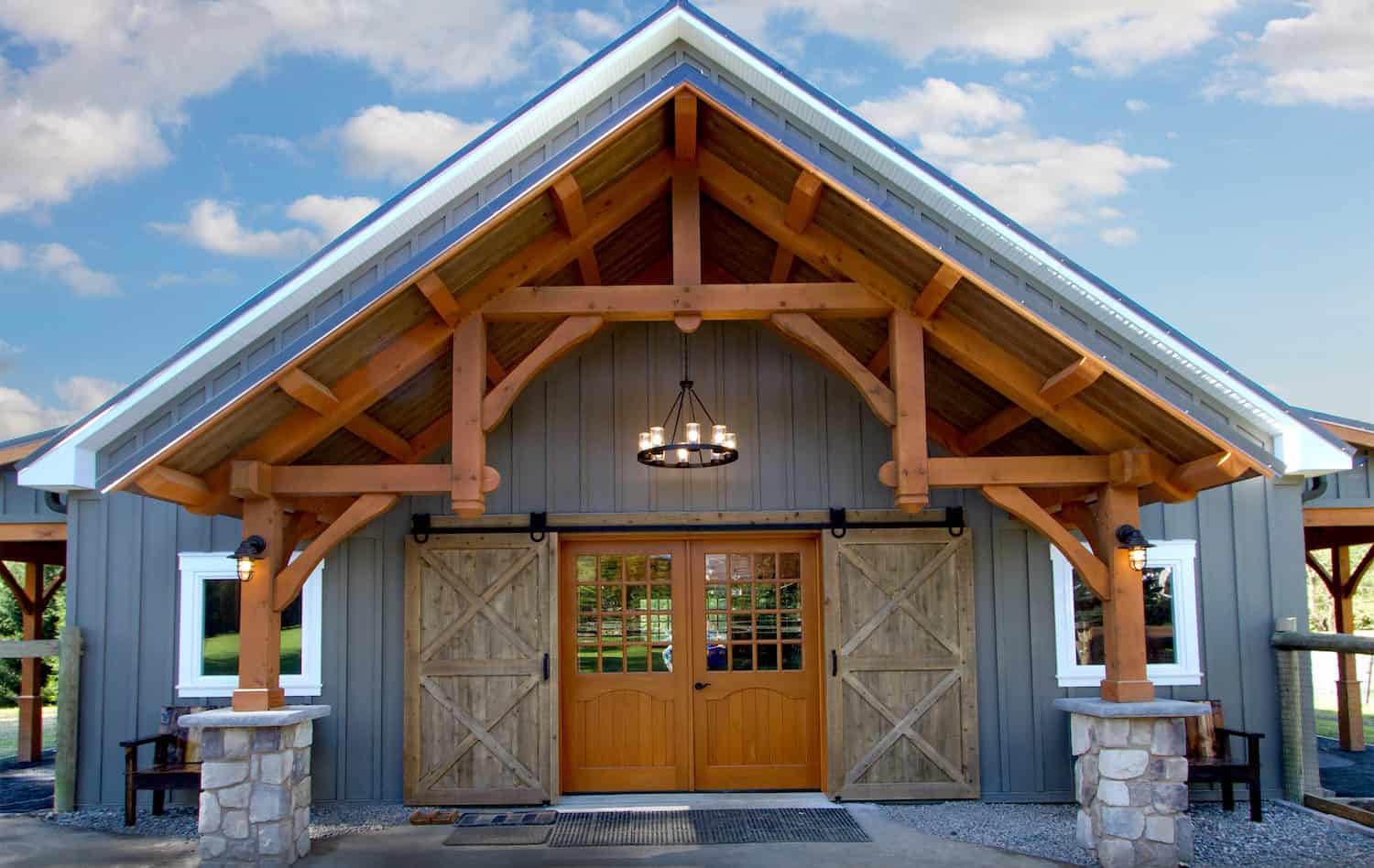
What’s the Difference Between Traditional and Timber Frame Construction?
Four Differences Between Traditional and Timber Frame Construction
Timber frame construction is highly sought after for both residential and commercial spaces even though it is typically more expensive than traditional construction. Before planning your project, check out the benefits and drawbacks for each style.
- Aesthetics
The main appeal of timber frame is the timeless beauty of exposed large heavy timbers. A timber frame structure is very much a work of art in that each piece of timber is precut. After delivery to the building site, the members are assembled piece by piece like a puzzle.
A similar look can be achieved by adding decorative timber pieces to a stud framed building. However, when comparing an authentic timber framed great room to a stud framed space with timber accents, it is not difficult to tell the difference. It would take extremely skilled craftsmen and a significant attention to detail to fully recreate the grandeur of traditional timber frame, and any cost savings would be minimal.
- Price Difference
The main drawback to timber frame structures is the cost. Since each piece of timber needs to be precut exactly to fit, the cost of a timber frame package is more than twice the cost of the framing package of a stud framed structure. Although modern computer numerical control (CNC) technology drastically reduces the time required to manufacture a timber frame package, the significant cost of machinery eliminates the possibility of matching the manufacturing costs of dimensional lumber used in stud framing.
With the significantly higher costs of timber frame construction, many people opt for a hybrid of timber frame and traditional construction. This is a great solution to achieving the desired atmosphere in a space such as the great room or master bedroom, while saving costs by stud framing the garage and secondary bedrooms.
- Environmental Impact
The environmental impact of a building project has everything to do with the quality of the insulation system, the efficiency of the heating and cooling equipment, and the non-wood building materials used. It is possible to build a timber framed building that is not energy efficient and it is possible to build a stud framed building that is energy efficient.
Both timber frame and stud framed structures can be combined with solar energy, geothermal heating and cooling, and many other non-biofuel solutions. All in all, the non-wood materials and systems used will determine the environmental impact of a building much more than selecting either a timber frame or stud framing over the other.
- Durability
For most projects, durability and longevity are cornerstones of the design and planning process. The longevity of most building materials including timber and lumber are heavily dependent on protection from the elements. When properly protected from the elements, traditional timber frame construction that does not utilize mechanical fasteners is incredibly durable. There are timber buildings in Europe and Asia that date back to the 1300s.
It is hard to imagine that a stud framed building of any type would last even close to seven centuries. However, most property owners do not have a seven-century lifespan planned for their building, so the longevity of timber versus stud framing is a somewhat mute argument as both are required to meet the same standards and regulations.
There is one aspect of longevity where timber frame perhaps shines brighter than stud framing, and that is fire resistance. It may seem counterintuitive; however, due to the charring affect that fire has on heavy timber, oversized timbers are very resistant to fire damage. In some cases, timber frame homes that have caught on fire are left still standing because of how long it takes to burn through the sturdy beams.
Ultimately, for the desired lifespan of most buildings, timber frame and traditional buildings are equally as durable, ensuring that you have a space that will last for decades to come.
Determining whether timber frame or traditional construction is the right fit for your project can seem overwhelming. You can read some of the most frequently asked questions we get about timber frames here. Let us know if you have any further questions!
